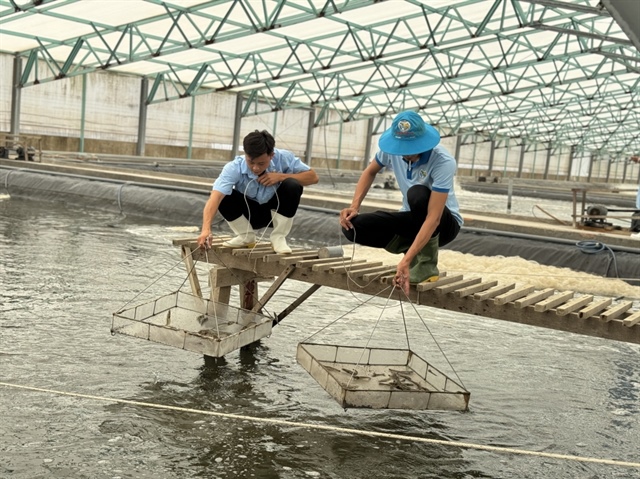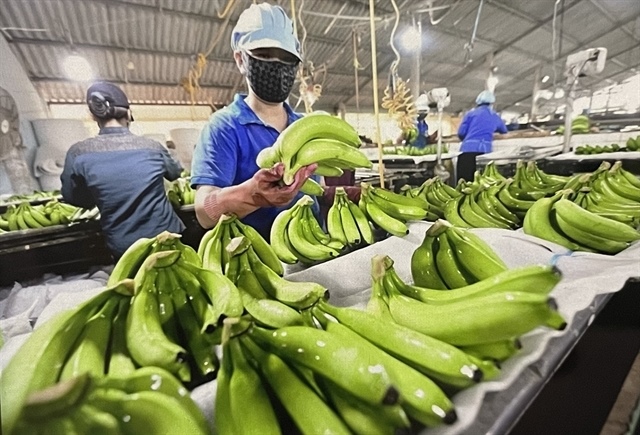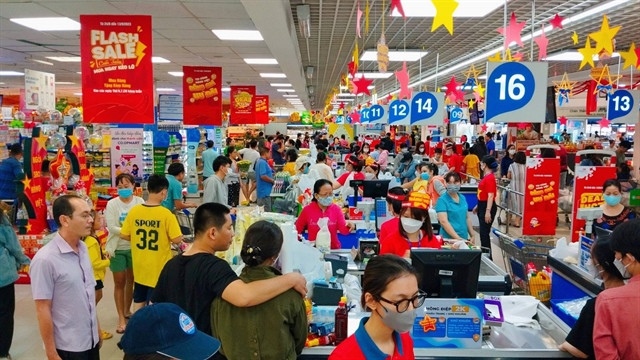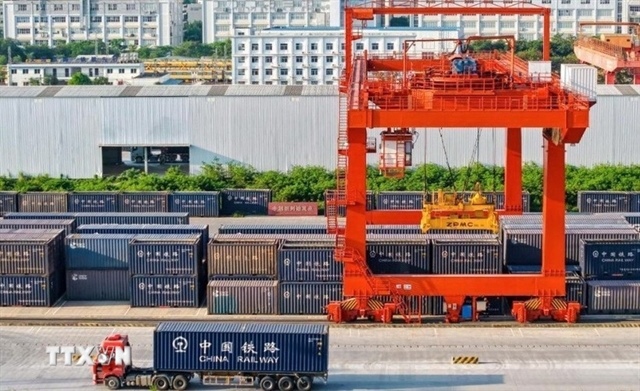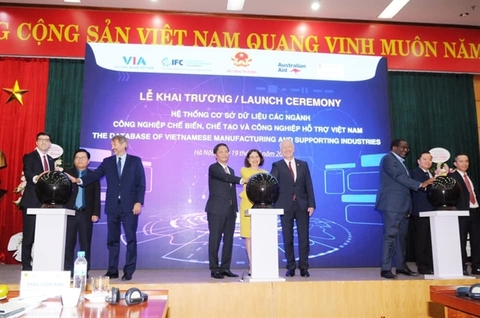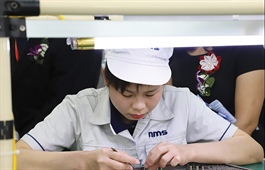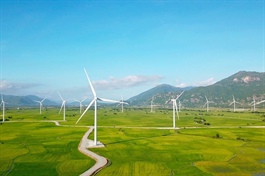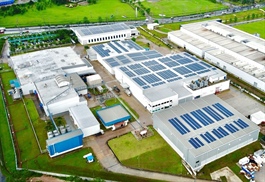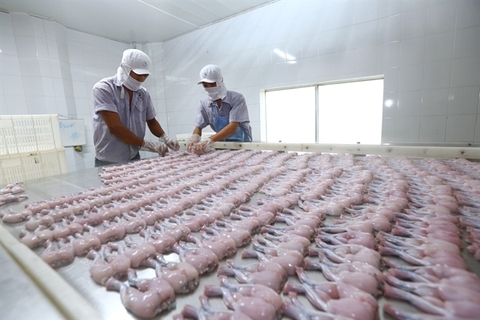Breaking down barriers to recovery
Breaking down barriers to recovery
ASEAN member states are aiming to enhance supply chain resilience, improving connectivity and the free flow of goods by minimising trade restrictiveness, particularly non-tariff measures. Doan Thi Thanh Ha and Salvador Buban from the Economic Research Institute for the ASEAN and East Asia, delve into this issue.
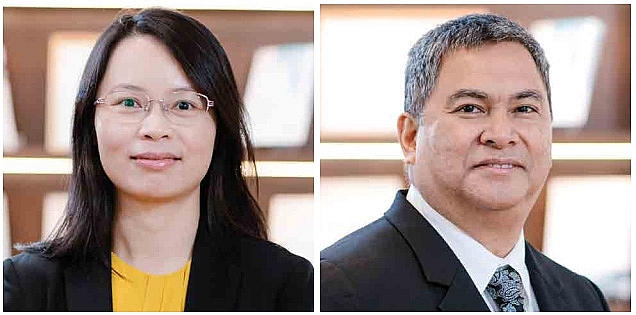
Doan Thi Thanh Ha and Salvador Buban from the Economic Research Institute for the ASEAN and East Asia
|
The COVID-19 pandemic has generated serious global shocks at an unprecedented scale. Since late 2019, within a few months, the virus has swept across continents, resulting in at least seven million cases of infection and over 400,000 deaths. On top of the enormous health cost, economic cost is also substantial. With strict transmission control policies such as wide-scale lockdowns, border closure and social distancing in place, production, trade, and services flows have been disrupted.
The World Bank’s 2020 Global Economic Prospects report projected a global GDP contraction of 5.2 per cent in 2020, the deepest recession in decades. Without a full understanding of the virus itself and effective prevention and treatment, a clear recovery path is not yet in sight.
Having close economic ties with China, ASEAN economies are expected to experience large contractions partly due to the disruption of China-led value chains. As of 2018, China is the bloc’s largest trading partner, accounting for approximately 17 per cent of total ASEAN trade. The negative shock is further exacerbated by the declining demand in the EU and the US, two large export markets for the ASEAN. In addition, reshoring by multinational enterprises who have invested in the region adds another risk to the disruption of global value chains. To mitigate the risks and maintain the region’s appeal to foreign investors, ASEAN countries need to continue their joint endeavour of liberalisation through regulatory reform.
The ASEAN has achieved significant improvements in tariff liberalisation. Average tariff on intra-ASEAN trade is as low as 0.2 per cent. On the contrary, non-tariff measures (NTMs), defined as policy measures other than ordinary tariffs, which can affect international trade by changing price or quantity traded, is on the rise. According to the NTMs database jointly developed by the Economic Research Institute of ASEAN and East Asia (ERIA) and the United Nations Conference on Trade and Development, between 2015 and 2018, the number of NTMs in the ASEAN has climbed by 15 per cent to about 9,500 measures. NTMs include many policy instruments, ranging from technical measures to ensure product safety and quality to non-technical measures, such as non-automatic licensing, price and quantity control, and subsidies, among others. Associated with NTMs is a plethora of technical and administrative procedures which could be time-consuming and costly for firms to comply with.
COVID-19 adds to these trade costs in several ways. First, trade cost can increase due to the introduction of new regulations to address concerns about food safety, food security, and the shortage of medical equipment, countries have introduced new regulations. Some regulations are indeed trade-enhancing, such as tariff reductions, elimination of import licensing requirements, and the suspension of anti-dumping duties for certain products. However, a growing number of economies have imposed export restrictions on essential products, including face masks, sanitisers, and some medical equipment. In some countries, the export of staples has also been restricted.
Albeit these measures could be allowed under the World Trade Organization, if not properly designed and administered, they can indeed be counterproductive. First, lack of access to necessities pose health risks to countries with inadequate domestic production capacity, especially for high-tech medical devices. In addition, the resulting price hike may prevent low-income people from getting access to medical supplies. Altogether, these imply higher risk of transmission of the virus, impeding cross-country efforts to contain the outbreak. Second, deprivation of export opportunities may discourage domestic firms from expanding their output. Third, imposition of trade barriers puts countries at risk of retaliation, stirring further trade disputes and disrupts supply chains.
Looking at a broader scale, rising trade cost due to COVID-19 is not limited to products used for prevention and treatment of diseases. Even for existing regulations, the closure of government offices lengthens processing time for paperwork, adding to the waiting time for export and import clearance of goods at the border. In a complex production network, trade costs accumulated along the supply chain could be significant.
Among the ASEAN’s key sectors with strong value chain participation, such as food and agriculture, and machinery and electronics, over 80 per cent of import value are subject to NTMs. A study by the ERIA suggests ad-valorem equivalent of NTMs are up to 5.7 per cent in manufacturing and 16.6 per cent in agriculture, implying significant added trade costs. Minimising trade restrictiveness to enhance supply chain connectivity.
Overall, to enhance supply chain resilience, improving connectivity and the free flow of goods has become urgent. With tariffs being at a low level, regulatory co-operation should push towards simplification and streamlining of NTMs based on concrete statistics and careful cost-benefit consideration.
Cognisant of the importance in addressing non-tariff barriers and managing NTMs, the 26th ASEAN Economic Ministers Retreat held on March 11 in the central city of Danang has resulted in a joint statement in which the ministers agreed to “continue addressing non-tariff barriers, particularly those that impede the smooth flow of goods and services in supply chains, and refrain from imposing new and unnecessary non-tariff measures.”
The ASEAN Plus Three Economic Ministers virtual meeting held on June 4 further reaffirmed that commitment.
Now the key task for the ASEAN is the effective implementation of initiatives and commitments on NTMs. While the ASEAN could continue to use its existing institutional arrangements and mechanisms to ensure that NTMs are not imposed arbitrarily without legitimate objectives, it should also strengthen co-operation with neighbouring East Asian countries. In the immediate term, restrictive measures on the export and import of essential commodities during the crisis should be removed. Measures to address safety concerns should be temporary and withdrawn once the pandemic situation improves.
In the longer term, enhancing transparency through full implementation of the ASEAN Single Window and the ASEAN Trade Repository, and respective national trade repositories is vital. Moreover, the adoption of international standards and eventually the harmonisation of various technical regulations are key elements that should be pursued in order to manage NTMs in the ASEAN.


